Electrical Resistance and Their Combinations
Important Questions on Electrical Resistance and Their Combinations
Two wires of same metal have the same length but their cross-sections are in the ratio . They are joined in series. The resistance of the thicker wire is . The total resistance of the combination is
The electric resistance of a certain wire of iron is If its length and radius are both doubled, then
The resistance of a wire at room temperature is found to be . Now to increase the resistance by the temperature of the wire must be [The temperature coefficient of resistance of the material of the wire is per
In the circuit shown, each resistance is . The potential , as indicated in the circuit, is equal to
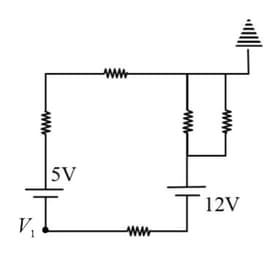
A uniform wire has electrical resistance . The wire is cut into equal parts. All wires are put parallel to each other and joined at the ends. The resistance of the combination is
Five resistances are connected as shown in the figure. The effective resistance between points and is
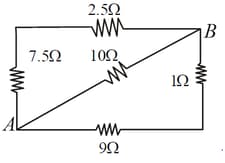
All the edges of a block with parallel faces are unequal. Its longest edge is twice its shortest edge. The ratio of the maximum to minimum resistance between parallel faces is
Calculate the effective resistance between and in the following network.
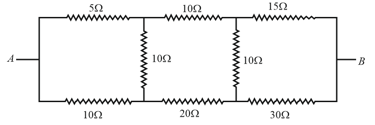
Each resistance shown in figure is . The equivalent resistance between and is
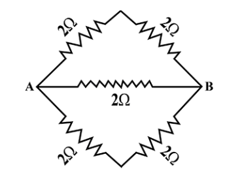
Two long coaxial and conducting cylinders of radius and are separated by a material of conductivity and a constant potential difference is maintained between them, by a battery. Then the current per unit length of the cylinder flowing from one cylinder the other is
In given circuit, all resistances are of . Current flowing through ammeter is
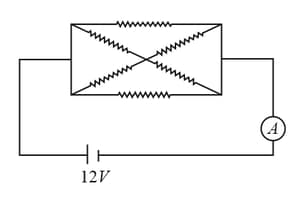
At what temperature would the resistance of a copper conductor be doubled of its value at . ()
In a household electric circuit, which of the following is/are correct?
(A) All electric appliances drawing power are joined in parallel.
(B) A switch may be either in series or in parallel with the appliance which it controls.
(C) If a switch is in parallel with an appliance, it will draw power when the switch is in the 'off' position (open).
(D) If a switch is in parallel with an appliance, the fuse will blow (burn out) when the switch is put 'on' closed.
Which statement is correct for the given circuit?
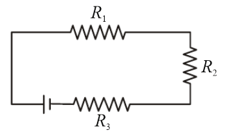
The net resistance between point and in the circuit shown in figure is
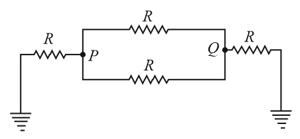
Find equivalent resistance between the points and ?

The equivalent resistance between points and is
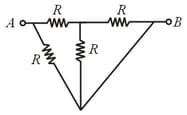
The resistance of a conductor increases with
The resistance of a wire is . If the length of the wire is doubled by stretching then the new resistance will be

